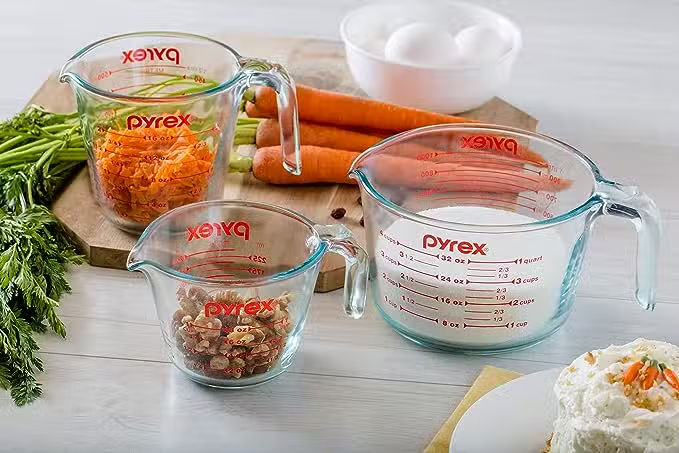How Many Ounces is 50 ml? A Complete Guide to Conversion

Introduction: Why Liquid Conversions Matter
How Many Ounces is 50 ml If you’ve ever followed a recipe, mixed a cocktail, or measured out medication, you’ve probably run into the confusing world of liquid measurements. Different countries use different systems—milliliters (ml) in most of the world and fluid ounces (oz) in the United States. That leaves a lot of people asking the same question: how many ounces is 50 ml?
On the surface, it seems like a simple math problem. But once you dive into it, you realize there’s more to it than just plugging numbers into a calculator. Not all ounces are the same—there are fluid ounces, dry ounces, and even slight variations between US ounces and UK ounces. So when you want to convert 50 ml to ounces, you need to know exactly what kind of measurement you’re working with.
In this article, we’ll break down the answer, explain how the conversion works, and explore why it’s important to understand these differences. Whether you’re cooking in the kitchen, preparing a drink, or working with health and fitness supplements, knowing how to convert milliliters to ounces is a handy skill to have.
The Quick Answer: 50 ml to Ounces

Let’s get straight to the point before diving into the details. 50 milliliters equals approximately 1.69 US fluid ounces. If you’re using the UK (Imperial) measurement system, 50 ml is equal to about 1.76 Imperial fluid ounces.
This difference may seem small, but depending on what you’re measuring, even tiny amounts can make a big difference. Imagine you’re mixing ingr How Many Ounces is 50 mledients for a cocktail or baking a cake—being slightly off could affect the taste, texture, or balance of the final product.
So, the general rule of thumb is this:
- 50 ml ≈ 1.69 US fl oz
- 50 ml ≈ 1.76 UK fl oz
That’s the short answer. But if you’re curious about how we got here—or if you want to be confident enough to do your own conversions—let’s explore this in more detail.
Understanding Milliliters (ml)
Before jumping into ounces, it’s important to understand what a milliliter is. The milliliter (ml) is part of the metric system, which is used almost everywhere in the world except for a few countries like the United States. A milliliter is one-thousandth of a liter, making it a very small, precise unit of measurement for liquids.
For everyday context, one teaspoon in the metric system equals about 5 ml. That means 50 ml is roughly 10 teaspoons. It doesn’t sound like much, right? That’s because 50 ml is commonly used for things like small drink portions, medicine bottles, How Many Ounces is 50 ml travel-sized toiletries, or ingredient measurements.
The reason milliliters are so widely used is because of their simplicity and consistency. In the metric system, everything is based on powers of 10. That makes conversions between liters, milliliters, and other metric units much easier than switching between ounces, cups, and gallons How Many Ounces is 50 ml.
Understanding Fluid Ounces (oz)
Now let’s flip to the other side: ounces. Here’s where things can get a little tricky. The ounce can mean different things depending on context. For example, there are:
- Dry ounces (used for weight, like flour or sugar)
- Fluid ounces (used for volume, like water or juice)
Since we’re working with milliliters (a liquid measurement), we’re talking about fluid ounces. A fluid ounce in the US is equal to approximately 29.57 ml. In the UK, How Many Ounces is 50 ml one fluid ounce equals about 28.41 ml.
This small difference between the US and UK versions is why you’ll sometimes see slightly different results when converting. If you don’t know which one you’re using, you could end up with the wrong measurement. That’s why it’s always best to clarify whether a recipe, bottle label, or instruction guide is referring to US fluid ounces or Imperial fluid ounces.
The Conversion Formula: How Many Ounces is 50 ml to Ounces
The math behind converting milliliters to ounces is pretty straightforward once you know the conversion factor:
- 1 US fluid ounce = 29.57 ml
- 1 UK fluid ounce = 28.41 ml
To convert milliliters to ounces, you simply divide the number of milliliters by the conversion factor. Let’s apply that to 50 ml:
- For US ounces: 50 ÷ 29.57 ≈ 1.69 fl oz
- For UK ounces: 50 ÷ 28.41 ≈ 1.76 fl oz
That’s why we can confidently say that How Many Ounces is 50 ml is just under 2 ounces in both systems.
Once you understand this formula, you can easily apply it to any conversion. For instance, if you want to know how many ounces are in 100 ml, you just double the number. The formula works across the board.
Real-Life Examples of 50 ml in Ounces
Understanding the math is one thing, but seeing How Many Ounces is 50 ml it applies in real life makes it more practical. Here are a few everyday examples where converting 50 ml to ounces comes in handy:
- Cooking and Baking
Many American recipes call for fluid ounces, while European recipes use milliliters. If a European recipe says to add 50 ml of milk, you’ll know that’s about 1.7 ounces—just under a quarter cup in US measurements. That’s a critical detail when you’re aiming for the perfect cake or sauce. - Cocktail Making
In bartending, precision is key. A shot in the US is typically 1.5 ounces, which is close to 44 ml. That means 50 ml is just a bit more than a standard shot. Knowing this can help you balance cocktails and ensure every drink tastes consistent. - Medicine and Health
Liquid medications often come in milliliters, but instructions in some countries might refer to ounces. If your doctor prescribes How Many Ounces is 50 ml of a solution and you’re used to ounces, it’s good to know it’s about 1.7 oz to avoid dosing mistakes.
Common Mistakes in Conversion
Even though the math is simple, people often make mistakes when converting milliliters to ounces. One common error is confusing fluid ounces with dry ounces. As mentioned earlier, dry ounces measure weight, while fluid ounces measure volume. Using the wrong one could completely throw off your measurements.
Another mistake is forgetting the difference between US and UK ounces. While the difference might seem tiny, in larger quantities it can add up. How Many Ounces is 50 ml For instance, 500 ml would be around 16.9 US ounces but closer to 17.6 UK ounces—a noticeable gap if precision matters.
Lastly, some people round off too aggressively. While rounding 1.69 ounces to “about 2 ounces” may work for casual cooking, it might not work for precise needs like lab work, baking, or mixing cocktails. Being slightly off in some cases could change the final result How Many Ounces is 50 ml.
Why Conversions Like This Are So Useful
Conversions like 50 ml to ounces aren’t just a math exercise—they’re practical tools that help in everyday life. From cooking to healthcare, they ensure accuracy and consistency. Without conversions, following recipes, taking the right dosage, or comparing international products would be a nightmare.
Another benefit is that conversions make global communication easier. With so many products and recipes shared across the internet, knowing how to switch between metric and imperial systems allows people worldwide to connect and understand each other better. How Many Ounces is 50 ml
Finally, conversions can even help save money. If you’re shopping for products like perfumes, beverages, or supplements, you can compare prices per ounce or per milliliter to figure out which option gives you the best value.
Conclusion: Mastering the 50 ml to Ounce Conversion
So, to wrap it up: 50 ml is equal to 1.69 US fluid ounces or 1.76 UK fluid ounces. That’s the straightforward answer, but understanding how to make these conversions yourself opens up a world of convenience. Whether you’re cooking, bartending, or handling healthcare needs, having this knowledge saves time and prevents mistakes.
The next time you come across a recipe, How Many Ounces is 50 ml product label, or dosage instruction that uses milliliters, you won’t have to stress about converting it into ounces. You’ll know the quick answer, the formula behind it, and the importance of being precise.
In a world where global products and recipes are shared more than ever, mastering conversions like how many ounces is 50 ml isn’t just helpful—it’s essential. It bridges gaps between measurement systems, improves accuracy, and makes life a whole lot easier.



